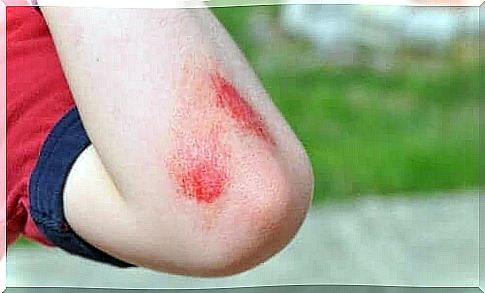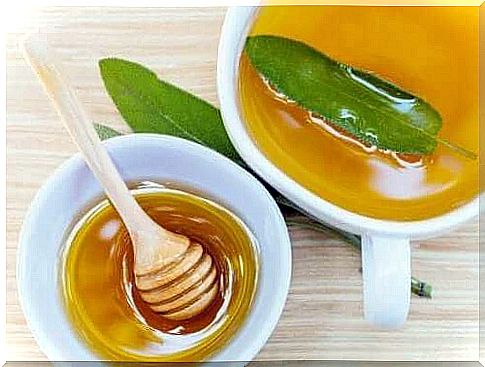Wound And Scratch Treatment With Sage And Honey

Wounds and scratches can be treated in a number of different ways, depending on how bad they are. Often, superficial wounds heal on their own as long as the skin is kept clean. Healing can still be accelerated with certain natural treatments. See below how wounds and scratches can be treated naturally with sage and honey!
Sage and honey have antiseptic and antimicrobial properties that help protect the skin from inflammation. They both also contain antioxidants and essential nutrients that promote skin healing.
Treatment of wounds and scratches with sage and honey
Wounds and scratches occur when an area of skin is damaged. They often cause bleeding, redness and pain. They can also become inflamed, causing other symptoms such as pus and swelling. Proper treatment of wounds and scratches speeds up their healing and prevents complications.
Fortunately, there are many treatment options available today that protect the skin from superficial wounds. Many of these are medicines, but some natural preparations can also be helpful, such as this sage-honey treatment. Both sage and honey are known for their antiseptic and healing properties. This combination is the perfect alternative for disinfecting damaged skin to reduce the risk of infection. It also helps soothe skin irritation and reduce swelling around the wound.

The benefits of sage in the treatment of wounds and scratches
Sage is one such medicinal plant that can be used to treat wounds and scratches due to its antiseptic and antimicrobial properties. It has been used in naturopathy since ancient times due to its ability to inhibit the growth of bacteria and other pathogens.
When used externally, it not only reduces the risk of infection in the lesion area but also helps to regenerate tissues and thus enhance the healing process.
The benefits of honey in the treatment of wounds and scratches
Organic honey is one of the most popular options for treating wounds and scratches. Due to its antibiotic, antifungal and antiseptic properties, it is an excellent alternative for the prevention and treatment of infections.
Using it externally benefits the health of the skin as it moisturizes and helps regenerate damaged tissues. It also soothes and relieves discomfort such as stinging, itching and pain.
Treatment of wounds and scratches with sage and honey

This home treatment for wounds and scratches is fairly easy to prepare. The ingredients are easily found in most large supermarkets or health food stores. The most important thing is to buy organic honey, because other types of honey are not of equal nutritional value and properties.
Ingredients
- 2 tablespoons sage powder (from dried leaves)
- 4 tablespoons organic honey
Means
- Sterile jar
- Wooden spoon
Manufacturing
- Grind several dried sage leaves into a fine powder. You can (and if you can) buy powdered sage extract from a health food store.
- Pour the sage powder into a pre-sterilized glass jar.
- Then add the honey and stir with a wooden spoon.
- When the mixture is ready, cover with a lid and leave in a cool, dark place for 24 hours.
- The mixture is then ready for use.
Treatment of wounds and scratches with this mixture
- Thoroughly clean the wound and apply this honey-sage treatment.
- Rub gently and leave on for 20-30 minutes.
- Rinse with warm water.
- Use this product two to three times a day until the skin is completely intact.
Caution: Do not use this treatment on open wounds or scratches. Serious skin damage requires medical attention as soon as possible. If the wound looks bad, see a doctor immediately.
Is this treatment included in your first aid kit? Now that you know how to make it, always have it ready for small wounds. The product can be stored for one to two months if stored in a refrigerator or other cool place.









